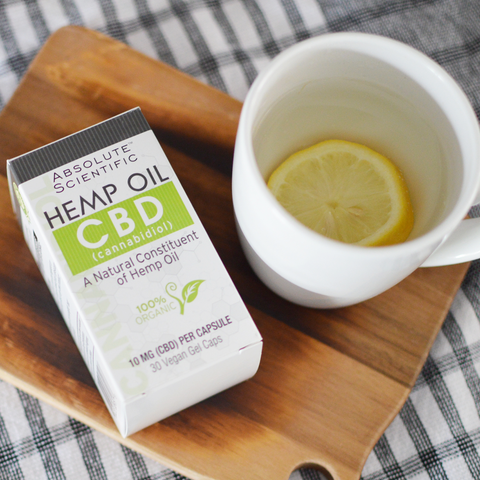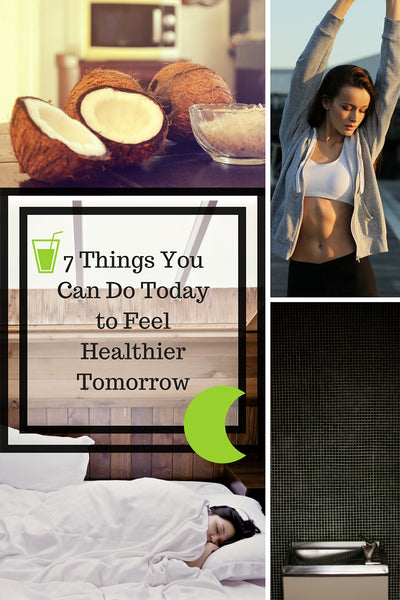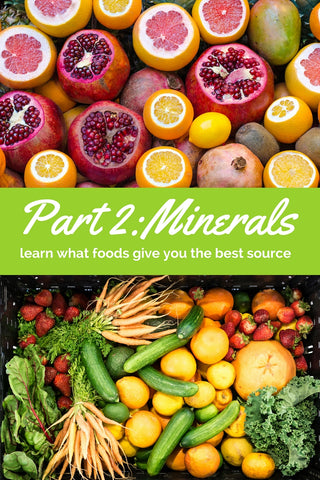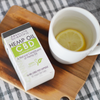Living Well — nutrition

Delicious and Good For You: The Benefits of Green Tea 0

Green tea has to be one of the healthiest drinks out there. If you’re looking to give your immune system a boost, speed up your metabolism, or improve your brain function without moving a muscle (except to grab your favorite mug), then green tea could be the secret ingredient you’ve been needing in your life.
Green tea helps with the best of both worlds, because it can help improve your outside by starting from the inside. Green tea is also completely natural. What more can you ask for? With how many benefits are jam-packed in this tasty little drink, you’d wonder why absolutely everyone hasn’t taken advantage of it yet.
Let’s start with the basics green tea is loaded with antioxidants and nutrients. You’ve heard it all your life, I’m sure— these things are awesome for you. But let’s break it down a little for those of you interested in the details. How do these things actually affect the health of your body? Antioxidants are nutrients and/or enzymes, meaning they play a huge role in fighting free radicals, substances that attack your DNA and other healthy cells. Antioxidants boost up your ability to fight off these free radicals, and push back against things like visible aging and cellular damage, and reduce the chance of disease. Antioxidants mop up these unstable free radicals to repair and limit cell and molecule damage that comes from our everyday contact with them.
Green tea contains a superpower called Epigallocatechin Gallate, which we’ll call EGCG. This compound has been tied to numerous studies that show it is effective in treating various diseases, making it a big contributing player in green tea’s health-boosting reputation. Green tea has also been known to increase fat burning and boost the metabolic rate.
Green tea also helps to keep you awake. Are you someone that needs your morning coffee in order to make it through the day? Green tea is likely a better alternative for you. Although it doesn’t contain as much caffeine as coffee does, green tea doesn’t contain the added cream and sugar that many of us coffee drinkers love. Instead, you get an all-natural option with all the aforementioned health benefits. Green tea contains this active stimulant, but because it does not have the same amount that you find in coffee, you won’t get the same jittery effects, which is oftentimes our least favorite part about getting our morning java. Instead, you’ll have a more productive, stable buzz. You’ll still reap the benefits of being more energized, but you won’t find yourself tapping your foot against your desk all day.
Hate drinking your tea plain? You can add some natural ingredients that serve up excellent health benefits themselves. Boost up the flavor and nutrition with lemon or honey.
Lemon is packed with nourishing elements like vitamins C, B6, A, E, and iron, magnesium, potassium, and protein, among others. Lemons also help to restore balance to the body’s pH, and is known to fight infections and cold through flavonoids.
Honey will add a sweetness to your tea that rivals sugar in your coffee. Besides its delicious taste, honey also aids in soothing things like allergies and sore throats. Honey will also help you to get yourself off to sleep, as it is a natural sleep aid. Honey is additionally overall anti-bacterial, anti-fungal, regulates blood sugar, probiotic (meaning it contains friendly bacteria!), and helps to strengthen the immune system by way of producing immune cells. How’s that for a super-packed drink?
We've only just begun to scratch the surface when it comes to what green tea can do for your body. It's all-natural, has a comforting taste, and produces a multitude of beneficial changes that will become visible after adding a few cups to your diet. What's not to love? Now go ahead and brew yourself a cup, you can thank us later.
- Amar Jit
- Tags: healthy living immune system lifestyle live well minerals natural nutrition remedies soothing wellness

Vegan vs. Vegetarian 0

These days we hear about a huge assortment of diets--raw, paleo, primal, etc.; it’s easy to get confused or assume they’re all variations of the same thing. There are many factors that can lead people to switch to a diet like this, whether its for a lifestyle change, health reasons, or ethical reasons, but changing your diet can be the first step to changing your life for the better.
The two most popular diets today are vegan and vegetarian, with over 7 million people falling into these categories. We hear a lot about vegan or vegetarian diets or lifestyles in the media, but there’s still a lot of confusion about what really defines each one. Let’s look at each individually, and see if you can determine whether this is a lifestyle change that would benefit you.
By definition, vegetarians avoid eating all animal flesh products. This means any meat, poultry, or fish. Within this group, there are three sub-groups of vegetarians that differ based on their decision to eat cheese or eggs, as they are animal byproducts. Lacto-ovo vegetarians eat dairy and eggs, lacto vegetarians eat dairy but avoid eggs, and vegan vegetarians avoid animal products altogether. Most vegetarians still use animal-derived products in other aspects of life, such as wearing a leather belt or a sweater made of wool. Of course, many vary in how much they adhere to these guidelines based on their own individual perspective.
As we previously stated, vegans are technically a sub-group of vegetarians that adhere to a much stricter diet, but in addition to avoiding food products, they carry the avoidance of using animal-based products into other industries, such as clothing or cosmetics.
Vegan diet restrictions include the exclusion of animal flesh products (meat, poultry, fish), or animal byproducts like eggs, dairy, gelatin or honey. A vegan diet consists of staples like fruits, vegetables, grains, and nuts, with many vegans using tofu as a substitute for meat.
While veganism does refer to diet, many that fall within this group view it instead as a lifestyle.
While some change their diet for health reasons (vegan diets are usually high in fiber and low in fats), the overwhelming majority of those who go vegan do it for moral and ethical reasons. Vegans are against the exploitation of animals for use as food or products by humans, and note the cruelty of the meat, poultry and dairy industries as major factors. Some make this change because of the questions about food safety concerning meat and other animal products, and some also go vegan for environmental or religious reasons.
Vegans also refrain from using any non-food products that come from animals, or are tested on animals. So no leather belts or wool sweaters. If that skin product was tested on animals, it will also be avoided by vegan users.
Vegan and vegetarian food has become much more accessible. In the past most thought of these foods as somewhat boring, plain, and undesirable tasting. Today there are a multitude of options for those that follow these stricter diets that allow people to truly enjoy what they’re eating and get the health benefits they want out of it, with many health food stores specializing in these types of diets. With around 7% of the population identifying as vegan or vegetarian, options are surely growing (and tasting better!)
Some studies even suggest that those who stick to a strict vegan or vegetarian diet may have a lower risk of cancer or heart disease. However, there are some downsides to these diets that you should be aware of when changing your eating habits. Vegan diets often lack essential nutrients that come from meat, and in order for these components to find their way into your diet, you may need to take B12 and amino acid supplements. Vegan diets are also low on iron and vitamin D, and it is necessary to find other sources for your diet.
Some view a vegan or vegetarian diet as the first step to improving your health and adopting a better lifestyle. Both have their benefits and show great health improvements, but we’d recommend consulting a doctor or nutritionist before you decide to switch over!
- Austin Peterson
- Tags: CBD Hemp Oil healthy living nutrition organic vegan vegetarian wellness
Before and After Foods: What Should You Really Be Eating Around Your Workout? 0

There are two things we need to discuss: why it’s better to eat something before your workout and the confusion between what’s good to eat before versus after. Many people think it’s best to not eat anything at all before exercising, but we need to view (healthy) food as fuel for our bodies. With this perspective in mind, we want to have enough energy so we can get through our workout. So let’s take a look at how you should be fueling up your body to make the most out of your exercise routine:
When choosing a snack to have before your workout, by before we don’t mean you’re swallowing your last bite just as your begin to do sprints. Generally a good rule of thumb is to eat 30 minutes before you begin your routine. Another key point to be aware of is that this is not the time to experiment with new foods. You want something your body is familiar with so that it can be easily digested and used as fuel. The last thing you want is your body trying to figure out what to do with that foreign substance in your stomach and getting sick while you’re trying to start your jumping jacks. It’s also great to add liquids to your pre-workout snack, which is why we love the idea of having a protein smoothie - add some spinach, banana, berries, almonds, and water to a blender. You can get really creative with this - the point is to have simple and complex carbs, and an amount of protein to fuel your workout. Other options we like are a piece of whole wheat toast with almond butter, a sliced banana, and some cinnamon - or try out some crackers with hummus if you want something a little more savory. Additionally, to keep it simple, slice up an apple and add some almond butter!
So now that you’ve busted your butt and ran through all of your energy during your workout, we want to give you something that will not only replenish your body but act as a recovery method to all the muscles you just worked out. As we focused on the carbs with some protein before the workout, we now want to consume more protein with some carbs added to the mix. Again, eat your post-workout meal within a half hour (to an hour) after you’ve finished your routine. We’re going to add a protein smoothie to the list of options again - except this time around, up the protein intake by adding a scoop of your favorite powder. Additionally, other great choices are fish (salmon) over a bed of greens or some quinoa with steamed veggies. You can get really creative with options here, but again, the most important takeaway is that you definitely do want to eat pre- and post-workout.
- Kate Hurd
- Tags: Absolute Health CBD exercise healthy living nutrition post-workout pre-workout superfoods wellness
7 Things You Can Do Today to Feel Healthier Tomorrow 0
Sometimes you’re just in need of a quick way to help get you back on track with your health and wellness goals. Well here are 7 of them that you can do right now to start improving your wellness routine and get back into the habit of being health conscious.
Oil Pulling—oil what?! Let us explain by thinking of it this way—rather than using mouthwash we’re using oil, like coconut oil, and instead of 30 seconds, try 15-20 minutes. But the benefits look so promising, you’ll want to get started right away! First off, we love coconut oil because by itself it has vitamins A, B, D and K. View our other blog post here to see vitamin benefits for your body. At the very least, coconut oil is a great organic substitute for mouthwash and can help improve skin and teeth. So what else is going on while you’re swishing around coconut oil for 20 minutes? The idea is that the toxins are being ‘pulled’ out into your mouth, so you’ll definitely want to spit it out afterwards (be sure to spit in the trash so you don’t risk the oil clogging up your sink). Try taking 1 tablespoon per day—people have claimed seeing results after just one use, but we recommend trying it for a whole week to see what it can do for you!
Breathing Exercises—who knew something so simple could have so many benefits? When you take several deep breaths—breathing slowly all the way in and all the way out—it activates your vagus nerve (in laymen’s terms, your body switches from storing fat to burning it). In addition, the process of breathing in so deeply rids your lungs of carbon dioxide and as a result increase your oxygen intake. So what are you waiting for—get breathing!
Drink Water—you know the saying, drink water now, because you’ll need it later! Whether you’ve heard it or not, it’s very true. If you’re someone who rarely drinks a glass of water, we guarantee you’ll notice a huge difference in the way you feel when you drink 2 to 3 liters a day. Although studies show differing recommendations on how much water you should drink, we’ve found the easiest way to drink water is to always carry it on your person, and when in doubt, take a sip! Not only does it keep you hydrated, but it regulates your body temperature, cushions your joints, and helps rid your body of harmful toxins. Another easy way to tell you’re getting enough water—your urine is light yellow or colorless!
Daily Oil Dosage—yep, we’re talking about CBD Hemp Oil! It comes in several different forms you can check out here, but a daily dose of it can help take you from distress to de-stress. Ahhh.
Tongue Scraping—another great way to extract toxins and bacteria from your body is by purchasing these scrapers inexpensively at health food stores and pharmacies. Throughout the day, bacteria and plaque covers up our tongue, so it makes sense that it can be more difficult to taste our food. But the effect doesn’t stop there—it can make us overcompensate with salt and sugar, ending in a series of overeating. To get the best effect, buy an actual tongue scraper instead of just using your toothbrush to really get those toxins off so you can start tasting again!
Sweat and Stretch—and in this order! Yet another way to get to release toxins from your body is through sweat, so get out and get moving! Exercise should be a daily occurrence anyways, and you want to make sure that you stretch after your warm up and before you start your full-fledged routine—that way your muscles have time to warm up and will stretch better and reduce the risk of injury.
Go to Bed!—although all of these options are great for feeling better as soon as the next day, they’ll all be for nothing if you stay up until the wee hours of the morning. Even though it might be difficult at times, your body will truly thank you the next day if you can squeeze in 7-8 hours of sleep the night before. On top of feeling more energized, it will help keep you on track with healthier eating and your skin will look a lot healthier—how could you pass up on these benefits just from getting a little more shuteye?!
- Kate Hurd
- Tags: daily exercise goals health healthy living hemp hemp oil live well motivation natural nutrition organic relaxation wellness


 In part 1, we discussed the different vitamins and how to incorporate them into your diet by choosing the best food sources. This time around, we’re looking at the minerals out there and how you can maximize your intake by following our list of foods for each category. Did you miss Part 1: Vitamins? You can check it out right
In part 1, we discussed the different vitamins and how to incorporate them into your diet by choosing the best food sources. This time around, we’re looking at the minerals out there and how you can maximize your intake by following our list of foods for each category. Did you miss Part 1: Vitamins? You can check it out right  It’s common to hear that you should eat oranges if you need more vitamin C in your diet or have a banana if you want to get some potassium. What you may not realize is that there are other food sources with a much higher vitamin or mineral content you may be missing out on. Here we take a look at the top foods you should be eating to get the most bang for your buck to incorporate those essential vitamins and minerals into your daily diet. We’ve broken it down into two parts: vitamins and minerals. Let’s start with vitamins and be on the lookout for more on minerals later! In order to provide you with the ultimate best food choices, to make our list the food sources had to provide at least 50% of the dietary reference intake (per the USDA) in one serving. Take a look!
It’s common to hear that you should eat oranges if you need more vitamin C in your diet or have a banana if you want to get some potassium. What you may not realize is that there are other food sources with a much higher vitamin or mineral content you may be missing out on. Here we take a look at the top foods you should be eating to get the most bang for your buck to incorporate those essential vitamins and minerals into your daily diet. We’ve broken it down into two parts: vitamins and minerals. Let’s start with vitamins and be on the lookout for more on minerals later! In order to provide you with the ultimate best food choices, to make our list the food sources had to provide at least 50% of the dietary reference intake (per the USDA) in one serving. Take a look!
